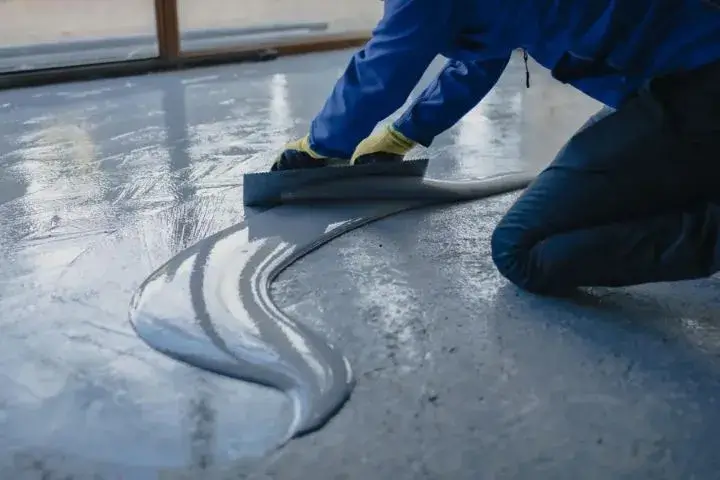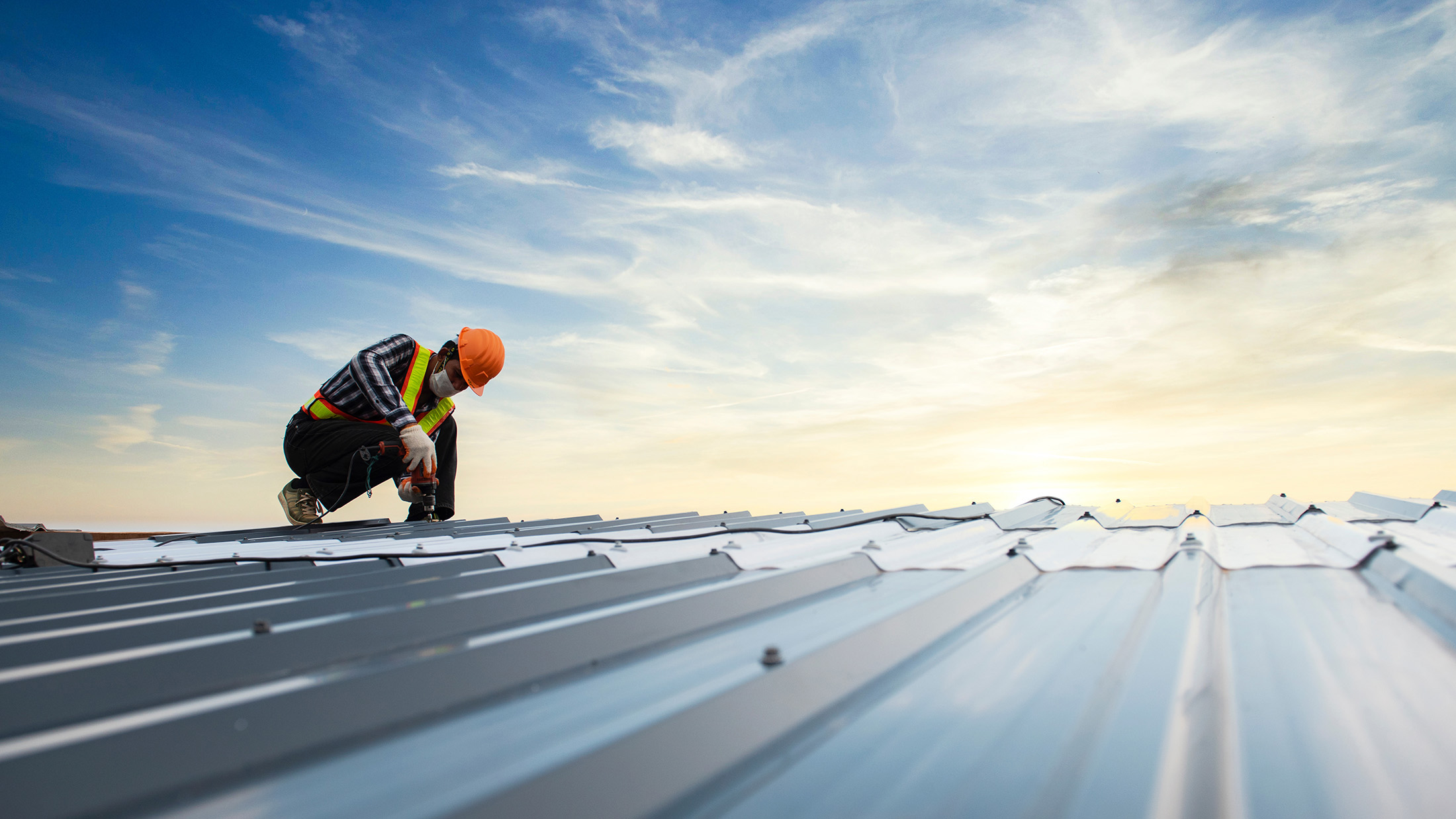The Role of Sump pump discharge drainage Omaha in Preventing Floods
Wiki Article
Exactly How Waterproofing Works: An In-depth Take A Look At Techniques and Technologies
Waterproofing is necessary for safeguarding structures from moisture-related damages. It includes various techniques and modern technologies that develop barriers against water breach. Conventional approaches, such as compacted clay, exist side-by-side with contemporary developments like liquid-applied membranes. Comprehending the nuances of these techniques is important for effective application. The performance of any type of waterproofing remedy pivots not only on the techniques used but likewise on continuous maintenance and assessment. What are the vital elements that affect lasting efficiency?Comprehending the Basics of Waterproofing
Waterproofing is a crucial procedure that safeguards frameworks from water intrusion, which can lead to significant damage gradually. This approach entails the application of various materials and strategies made to produce a barrier versus moisture. The primary objective is to avoid water from permeating surfaces, which can trigger deterioration, mold growth, and architectural instability.Various elements influence the option of waterproofing technique, including the kind of structure, its place, and environmental problems. Understanding the physics of water movement and the homes of different materials is crucial in selecting an effective waterproofing solution.Effective waterproofing not just safeguards buildings however also boosts their longevity and integrity. Normally, it is incorporated into the style phase of building to guarantee comprehensive security. As recognition of water-related concerns grows, the significance of understanding waterproofing fundamentals ends up being increasingly clear to architects, building contractors, and homeowner alike.Standard Waterproofing Techniques
Conventional waterproofing methods have actually been made use of for centuries, counting on time-tested methods and products to protect structures from water damages. One of the oldest techniques includes the usage of clay, which, when compacted, creates an all-natural barrier versus wetness. Furthermore, asphalt, a sticky, black material acquired from petroleum, has actually been employed for its waterproof residential properties, commonly applied to roofings and foundations.Another technique includes the application of lime-based plasters, which provide a breathable layer that enables dampness to escape while protecting against water ingress. Thatch roof covering, a conventional approach still seen in some societies, provides outstanding waterproofing due to its securely loaded straw layers.Moreover, making use of stone and block has actually been noticeable, as these materials are naturally immune to water when correctly set up. On the whole, conventional waterproofing techniques stress the significance of choosing ideal products and construction methods to improve longevity against water intrusion.Modern Waterproofing Technologies
Improvements in modern-day waterproofing modern technologies have transformed the method structures are safeguarded from water damages. Ingenious strategies such as liquid-applied membrane layers and innovative sealers have actually enhanced the performance and convenience of waterproofing solutions. These technologies enable seamless application, decreasing the threat of leakages and making certain extensive protection over complicated surfaces.Moreover, the combination of wise modern technologies, such as moisture sensors and automated surveillance systems, makes it possible for real-time analysis of waterproofing efficiency. This positive technique helps with timely maintenance and reduces lasting fixing costs.Additionally, innovations in spray-applied layers supply quick application and excellent attachment, adjusting to different substrates while giving robust protection. Strategies like polymer-modified systems additionally improve flexibility and durability, making them appropriate for varied settings. Generally, contemporary waterproofing technologies not just alleviate water intrusion but additionally contribute to the longevity and sustainability of frameworks, noting a significant shift in the industry.Products Used in Waterproofing
The effectiveness of waterproofing remedies heavily counts on the materials utilized in their application. Numerous materials are employed to produce barriers against water access, each with distinct buildings fit for various settings. Frequently utilized materials consist of membrane layers, layers, and sealants.Liquid-applied membranes, often made from polyurethane or acrylic, develop a seamless obstacle that adapts to intricate surfaces. Sheet membranes, typically built from rubber or thermoplastic, offer longevity and are optimal for bigger areas. In addition, cementitious waterproofing products, composed of cementitious substances, give outstanding bond and flexibility.Sealants made from silicone or polyurethane are vital for joints and joints, guaranteeing detailed security. In addition, innovative products, such as geo-composite membranes, incorporate numerous features, enhancing efficiency. On the whole, the selection of waterproofing materials is important in accomplishing long-lasting and effective water resistance, tailored to specific project demands and environmental problems.
Usual Applications of Waterproofing
Waterproofing plays an important function in different markets, making certain the long life and integrity of structures. Common applications include residential solutions that protect homes, commercial infrastructure that safeguards organizations, and commercial setups that need robust security against moisture. Understanding these applications highlights the value of waterproofing in keeping both safety and security and capability official website throughout various atmospheres.Residential Waterproofing Solutions
Numerous property owners face challenges with dampness invasion, making effective residential waterproofing remedies important. Various methods exist to resolve this problem, including exterior and interior waterproofing systems. Interior services typically entail the application of sealants and coverings to cellar wall surfaces, which assist avoid water infiltration. Exterior methods commonly consist of the installment of drain systems and waterproof membrane layers that divert water far from the foundation.Additionally, property owners might consider sump pumps to get rid of water build-up and dehumidifiers to regulate humidity degrees. Correct grading and the use of gutters also play an important role in managing water flow around the home. By carrying out these approaches, homeowners can greatly lower the danger of water damages and mold growth, making certain a dry and secure living environment.
Commercial Infrastructure Protection
Effective waterproofing solutions play a crucial role in the protection of commercial framework. Drainage & waterproofing company Omaha. These methods are necessary for securing buildings, car parking structures, and bridges from water damage, which can endanger structural integrity and bring about expensive repair work. Common applications consist of the installment of membranes, coverings, and sealers that produce barriers versus wetness seepage. Areas such as cellars, roofing systems, and outside wall surfaces are frequently focused on to ensure durability and sturdiness. Additionally, waterproofing systems can boost energy efficiency by protecting against water-related problems that may bring about mold growth and damage. By carrying out durable waterproofing steps, residential property owners can safeguard their financial investments and preserve functional efficiency, eventually adding to the overall sustainability of business facilitiesIndustrial Applications Review
While numerous sectors company website face unique challenges, the need for trustworthy waterproofing remedies continues to be a consistent in commercial applications. Industries such as production, building, and energy typically run into settings where moisture direct exposure can threaten architectural stability and operational efficiency. In manufacturing centers, waterproofing is crucial for safeguarding machinery and products from water damages. In building, it safeguards foundations and basements versus groundwater seepage. The energy sector relies upon waterproofing for the defense of devices in hydroelectric plants and offshore frameworks. Furthermore, food handling markets utilize waterproofing to assure hygiene and compliance with safety and security criteria. Generally, efficient waterproofing services are important for enhancing durability, safety and security, and efficiency across numerous industrial settings.
Upkeep and Durability of Waterproofing Solutions
Waterproofing options are developed to supply long-term defense against moisture invasion, normal maintenance is crucial to ensure their performance and longevity. Regular inspections play a considerable duty in identifying prospective concerns such as cracks, peeling, or indications of water damages. Addressing these issues immediately can prevent further wear and tear and expensive repairs.Additionally, cleansing the surface of waterproofed areas aids get rid of dirt and particles that could jeopardize the stability of the waterproofing obstacle. It's additionally advisable to reapply protective finishings or sealers as suggested by manufacturers to maintain optimal performance. Ecological aspects, such as UV direct exposure and severe climate condition, can impact the life expectancy of waterproofing products, making regular analysis crucialRegularly Asked Inquiries
Can Waterproofing Be Applied in Winter?
The inquiry of using waterproofing in winter elevates problems concerning attachment and treating. Lots of products may not execute at their ideal in reduced temperature levels, requiring Home Page cautious choice and consideration of particular guidelines for effective application.The Length Of Time Does Waterproofing Usually Last?
The duration of waterproofing effectiveness differs based upon products and environmental variables. Usually, it can last from five to 10 years, however routine maintenance and evaluations are necessary to ensure peak efficiency and durability.Is DIY Waterproofing Effective and Safe?
The effectiveness and safety and security of DIY waterproofing depend on different elements, including worldly high quality and application technique. While some individuals achieve sufficient results, others might come across problems that compromise long-lasting security and architectural honesty.What Are the Indications of Failing Waterproofing?
Indicators of stopping working waterproofing include noticeable water discolorations, peeling off paint, mold development, mildewy odors, and moisture in wall surfaces or ceilings - Basement waterproofing Omaha. These indications recommend compromised barriers, demanding prompt examination and potential removal to avoid more damageJust how Do I Choose the Right Waterproofing Specialist?

Report this wiki page